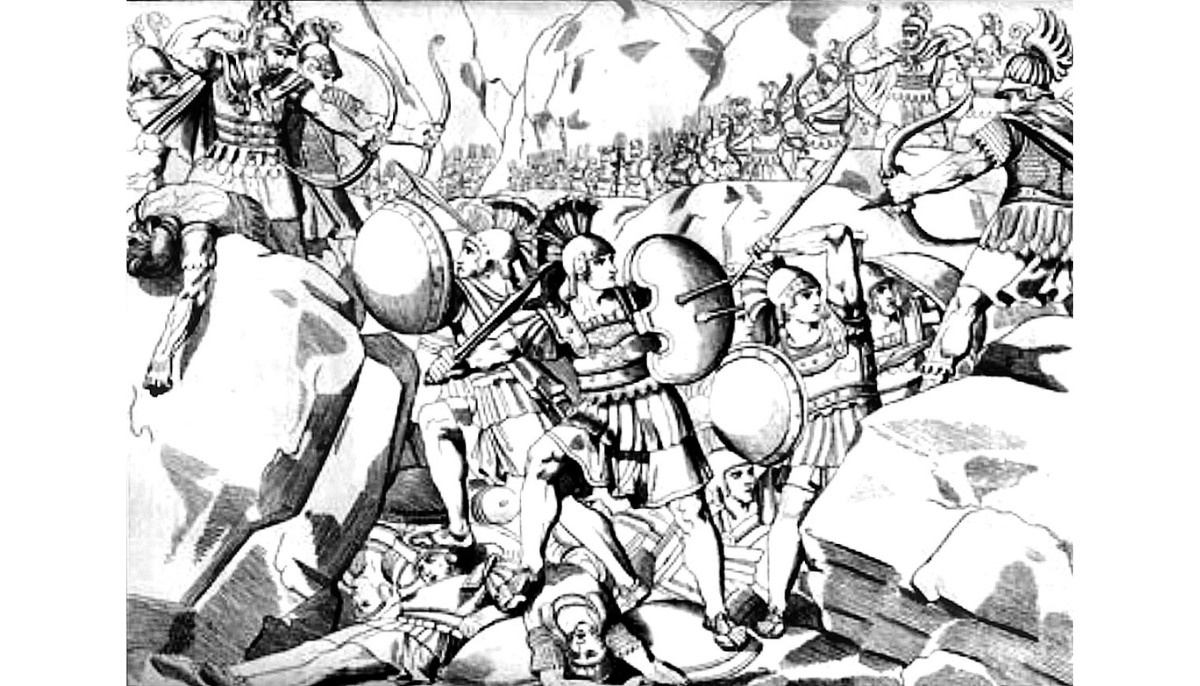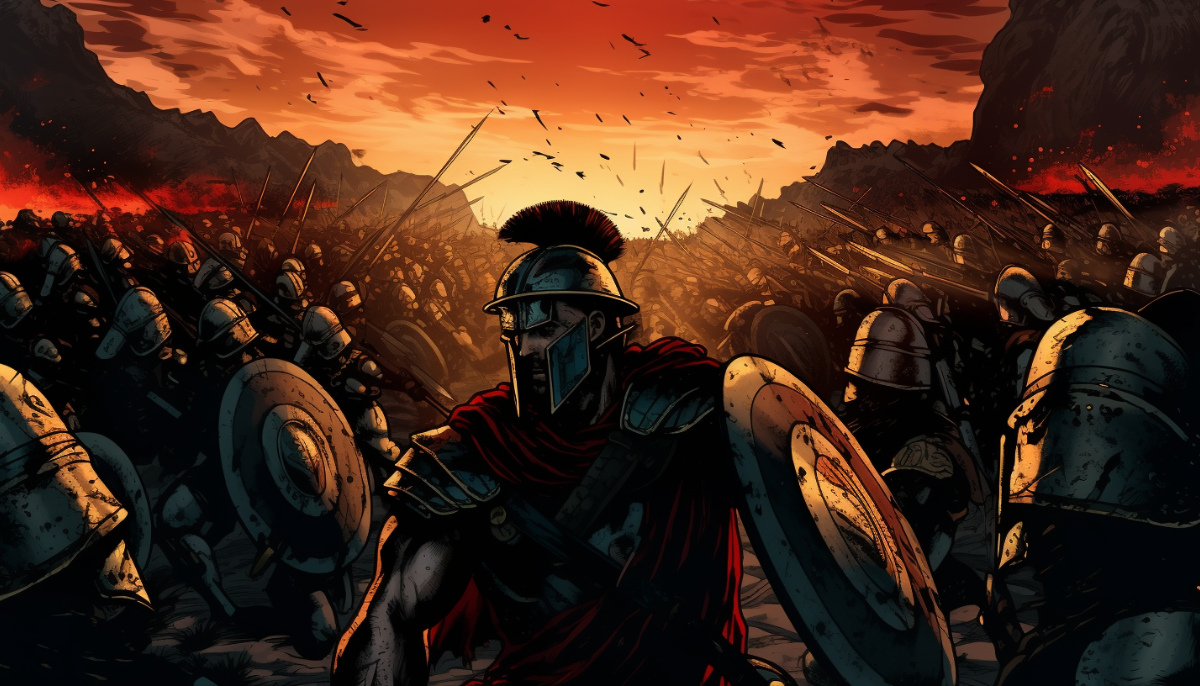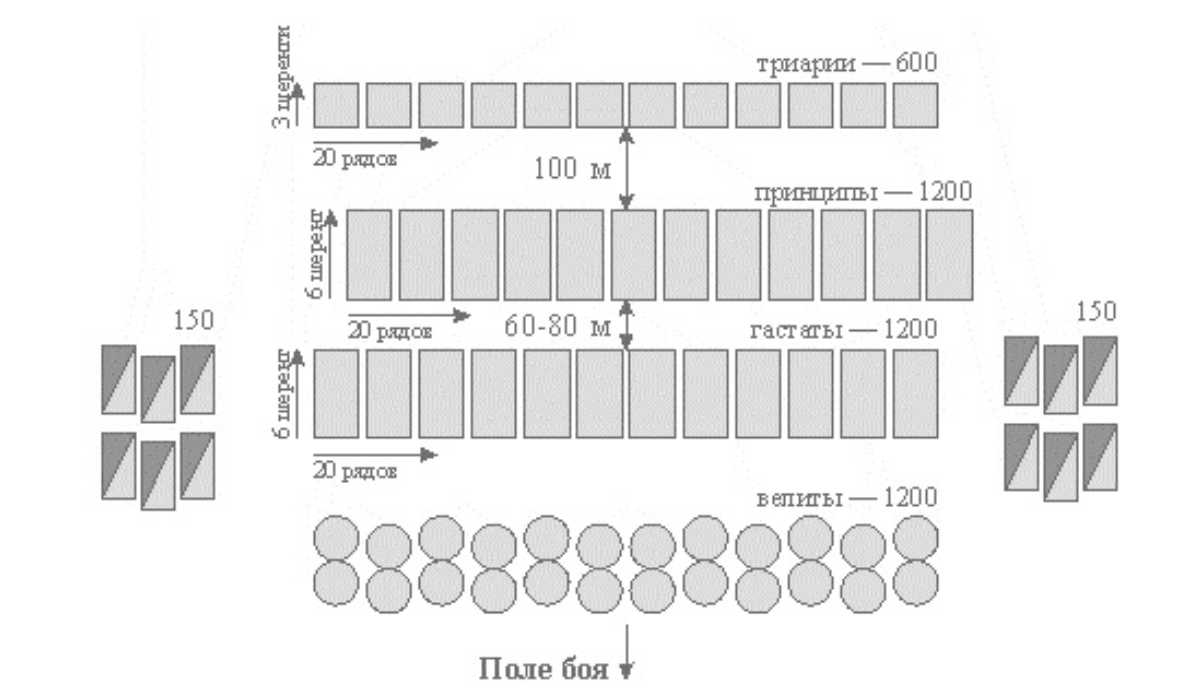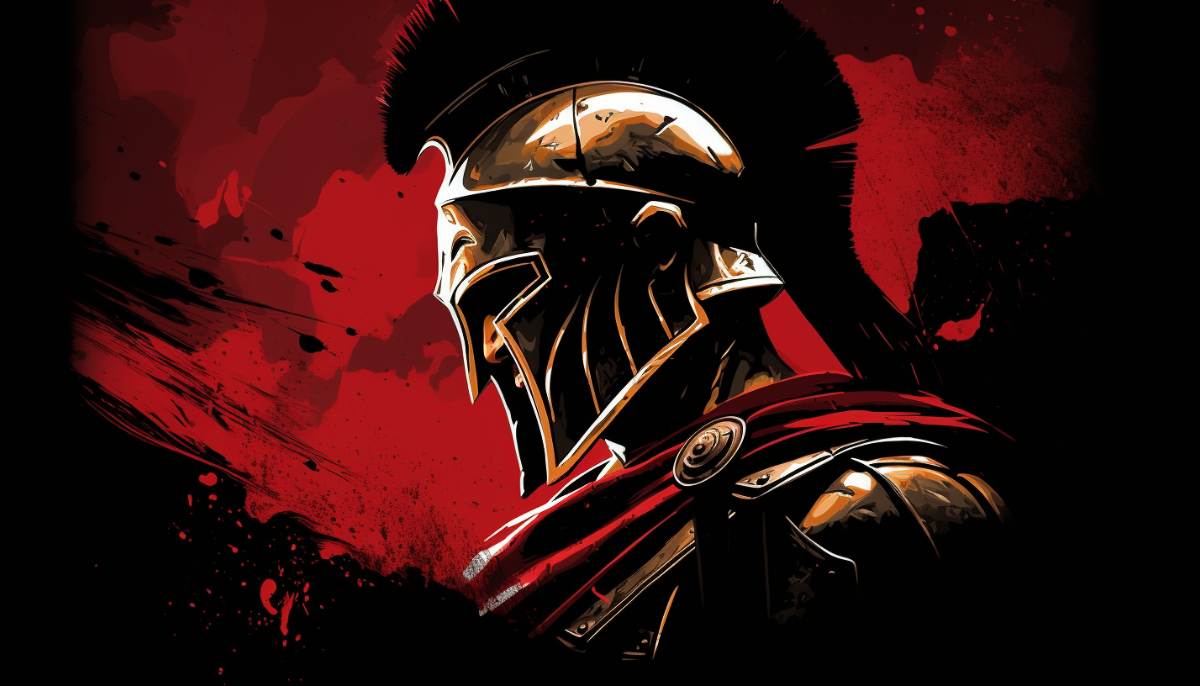History is brimming with stories of ancient empires and legendary rivalries; few are as renowned as Rome and Sparta. These iconic names evoke images of military might, strategic brilliance, and enduring legacies.
In this journey, we will uncover the historical battles that defined their encounters, tracing these formidable states’ fascinating rise and fall. But the real intrigue lies ahead as we explore the hypothetical scenarios, envisioning an epic showdown between Julius Caesar, the master tactician of Rome, and Pausanias, Sparta’s legendary commander.
Join us on this expedition into the worlds of Rome and Sparta, where history meets imagination in an epic clash for the ages.
Romes vs Sparta – historical battles

The clash between Rome and Sparta remains an intriguing tale of two formidable powers. Though they never engaged in a confrontation at their peaks, their encounters in the ancient world left a mark.
The Roman Siege of Sparta (195 BC)
In 195 BC, the Roman Republic, led by Flamininus, descended upon the once-mighty Sparta, which had seen better days. The Roman army, numbering around 50,000 strong, encircled the city.
As the Romans stormed the city, the Spartans, realizing their disadvantage, resorted to a cunning strategy. They set fire to the buildings near the city walls, creating a blazing barrier that repelled the Roman advance. The narrow streets of Sparta further hindered Roman progress. This unconventional approach by the Spartans thwarted the Roman siege.
The war, known as the ‘War against Nabis,’ ultimately ended in Sparta’s surrender. Nabis, the tyrant king of Sparta and its last free ruler, was left in charge but became a client king under Roman authority. Rome sought to maintain a somewhat robust Sparta to counterbalance the growing power of the Achaean League.
The siege of gythium
After Flamininus and his legions departed, the Greek states were left to fend for themselves. The major powers in the region were now Macedon, the Aetolians, the strengthened Achaean League, and a weakened Sparta. The Aetolians opposed Roman involvement and encouraged Nabis to reclaim his lost territories.
In 192 BC, with a bolstered army and navy, Nabis besieged Gythium. The Achaeans sought help from Rome. The Senate dispatched the praetor Atilius with a navy and Flamininus as an envoy. However, the Achaean forces, led by Philopoemen, didn’t wait for the Roman fleet. They suffered a naval defeat against the Spartans. On land, the Achaeans couldn’t break the Spartan blockade around Gythium.
Philopoemen re-entered Laconia, achieving a victory despite an ambush. Plans were underway to capture Sparta, but Flamininus persuaded Philopoemen to spare the city. Nabis accepted the existing conditions and surrendered under similar terms to the previous treaty.
The end of Sparta
As Sparta’s power waned, Nabis turned to the Aetolians for help. They sent cavalry led by Alexamenus, who fatally charged at Nabis during a drill. The Aetolian troops briefly occupied the palace but were eventually driven out. Philopoemen entered Sparta with the Achaean army, making it part of the League while preserving its laws and territory but not restoring the exiled Spartan warrior class.
In 189 BC, Rome allowed most hostages to return to Sparta, excluding Nabis’s deceased son. Still lacking a port and facing political and economic issues, Spartans captured Las, home to many exiles, triggering the endgame for Spartan independence. The Achaeans demanded the culprits’ surrender. They responded by murdering pro-Achaean citizens, seceding from the League, and seeking Roman protection, which Rome didn’t oppose.
In 188 BC, Philopoemen marched into northern Laconia, massacred anti-Achaean individuals, demolished Nabis’s walls, and reinstated exiles while replacing Spartan law with Achaean law. This marked the end of Sparta’s prominence, with Achaea rising as the dominant power in the Peloponnese.
Rome vs Sparta at their peak
We must decide when the Spartan and Roman armies peaked for this intriguing hypothetical scenario.
Sparta at its peak

Although the Spartan Hegemony primarily unfolded in the last quarter of the 4th century BC, it marked Sparta’s territorial peak and political ascendancy. During this era, Sparta held sway over Greece, with military leaders governing local regions, consolidating their territorial control.
Sparta was the greatest land power in classical Greece. It was characterized by its warrior society, employing the phalanx style of warfare that was prevalent in Greece.
Spartan military training was legendary, with boys entering the agoge regime at the tender age of seven. This regime involved intense and rigorous military instruction, focusing on physical prowess, sports, cunning tactics, and broader education in poetry, music, academics, and even politics—those who completed the agoge by age 30 achieved full Spartan citizenship.
When examining Sparta’s military peak, we must look back to an earlier period, notably the Second Persian War. Spartan warriors played a pivotal role. They led the united Greek armies against Persia.
Sparta sent an impressive force of 45,000 men, consisting of 5,000 Spartiates (full citizen soldiers), 5,000 other Lacodaemonian hoplites (perioeci), and a substantial contingent of 35,000 helots—a testament to their military might and strategic prowess.
Rome at its peak

Rome experienced various peaks of military success throughout its history. While the armies of Trajan extended the Roman Empire to its greatest territorial extent, Aurelian’s forces reunited a fragmented Roman world, averting its collapse. Additionally, Scipio Africanus’s legions achieved a historic victory against Rome’s greatest historical adversary, Hannibal.
However, among these peaks, one choice stands out—the legions of Julius Caesar. When Caesar embarked on his campaign in Gaul, he began with four legions. Upon his triumphant return, he led eleven legions, comprising 6,000 men each.
Caesar’s legions, battle-hardened and fiercely loyal, had successfully subdued Gaul and would go on to defeat Pompey’s legions. Dan Carlin asserted that Caesar’s legions possessed such unrivaled might that they could have faced any Western European army for the subsequent millennium and emerged victorious.
Who would win, Rome or Sparta?

In a hypothetical battle between Rome, led by Julius Caesar, and Sparta under the command of Pausanias, the outcome would likely be a resounding victory for Rome.
In most engagements, Rome’s strategic flexibility, superior resources, and well-disciplined legions would likely result in a Roman victory, often in the form of a complete rout.
While the clash between these two historical giants might indeed be epic in theory, the outcome would often lean heavily in Rome’s favor due to its military supremacy and adaptability.
Why Rome would dominate Sparta

Rome’s military tactics were highly adaptable and evolved to counter the rigid Greek phalanxes, making them formidable opponents. Rome had faced Greek forces many times and consistently dominated them on the battlefield.
Sparta, on the other hand, was a warrior society focused on individual excellence. They were more isolationist and rarely interested in large field armies. Their strength lay in the cohesion and discipline of their phalanx formations. A Spartan warrior might be evenly matched with a Roman soldier in one-on-one combat.
However, Roman society was fundamentally built on an expansionist military, with a vast and flexible army capable of executing a wide range of strategies. Julius Caesar, one of history’s greatest military minds, added to the Roman military’s superiority with his tactical brilliance and strategic acumen.
The only scenario in which Spartans might have a chance would be a Thermopylae-type situation, where they could leverage the terrain to create a head-on battle where their phalanx could not be easily countered or flanked. Even then, it would be a challenging endeavor against the might and adaptability of the Roman legions.
So what do you think? Were we too harsh on the Spartans? Did they ever stand a chance against the might of Rome, or was a different commander the missing element in this hypothetical clash?






